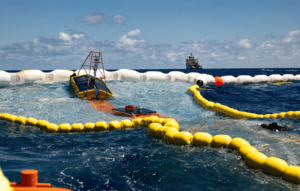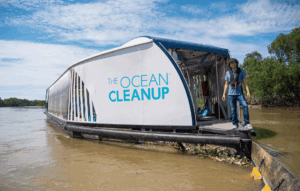Many individuals assume that chemicals found in food, water, and consumer products must have undergone thorough safety testing before being approved for public use. However, this assumption does not align with current regulatory realities. Today, tens of thousands of chemicals are in circulation, many of which were never adequately tested for long-term safety. Among the most concerning are endocrine-disrupting chemicals (EDCs) such as atrazine and bisphenol A (BPA). These substances are not only widespread but are linked to a range of adverse health outcomes, especially in children and pregnant women.
Understanding where these chemicals are found, how they impact the body, and what steps can be taken to minimize exposure is essential for safeguarding health — particularly during sensitive stages of development.
Atrazine: A Widespread Herbicide with Hormonal Consequences
Atrazine is one of the most widely used herbicides in the United States, primarily applied to corn, sugarcane, and sorghum crops. It is also used on golf courses, residential lawns, and public parks. Due to its water-soluble nature, atrazine is frequently detected in rainwater, groundwater, and drinking water supplies, particularly in agricultural regions.
In fact, atrazine is the most commonly detected pesticide in U.S. drinking water. Despite this, its continued use in the United States starkly contrasts with the European Union, which banned the chemical in 2004 due to concerns over contamination and human health impacts.
Health Effects and Scientific Findings
Research conducted by Dr. Tyrone Hayes and colleagues at the University of California, Berkeley, revealed that exposure to low levels of atrazine (as little as 0.1 parts per billion) can disrupt hormone function in amphibians, leading to the feminization of male frogs. This is primarily due to atrazine activating the enzyme aromatase, which converts testosterone into estrogen.
Subsequent studies have extended these concerns to humans and other mammals. Documented and suspected effects include:
Impaired sexual development in fetuses
Genital abnormalities in newborn boys, including micropenis and undescended testicles
Reduced fertility and sperm quality
Increased risks of ovarian, thyroid, and non-Hodgkin’s lymphoma cancers
Disruption of endocrine systems in fish, birds, and mammals
The U.S. Environmental Protection Agency (EPA) has acknowledged these risks in recent assessments but continues to allow the widespread use of atrazine, in part due to lobbying from its manufacturer, Syngenta.
BPA: A Ubiquitous Chemical with Estrogenic Effects
BPA is a synthetic compound that has quietly infiltrated our homes, our diets, and our bodies. Despite growing public awareness, its widespread use and persistence in the environment continue to raise significant concerns for public health, particularly for infants, children, and pregnant women.
Where BPA Is Found
Bisphenol A (BPA) is a synthetic compound used in the manufacturing of polycarbonate plastics and epoxy resins. It is found in a wide range of consumer products, including:
Canned food and beverage linings
Plastic food containers and water bottles
Baby bottles and sippy cups (before the 2012 FDA ban)
Dental sealants and medical equipment
Although the FDA banned BPA in baby bottles and sippy cups, it continues to be used in many other everyday items. Alarmingly, BPA has been detected in the urine of more than 90% of Americans, suggesting continuous and widespread exposure.
Documented Health Risks
BPA is an endocrine disruptor that mimics the effects of estrogen. Even at low levels, BPA has been linked to a variety of health concerns:
Early onset of puberty
Behavioral disorders such as ADHD
Decreased fertility in both sexes
Hormone-sensitive cancers (e.g., breast and prostate cancer)
Immune system dysfunction
Obesity and metabolic disorders
Of particular concern is BPA’s ability to cross the placenta during pregnancy, thereby exposing fetuses to hormone-altering effects at critical stages of development. BPA has also been found in breast milk, compounding the risk for newborns.
BPA-Free Products: A Misleading Solution
Many manufacturers now market “BPA-free” products, often using substitute chemicals such as bisphenol S (BPS) and bisphenol F (BPF). Unfortunately, recent research suggests that these alternatives may be just as disruptive to the endocrine system as BPA and, in some cases, even more potent.
Common Sources of Atrazine and BPA in Daily Life
Understanding the primary exposure points for atrazine and BPA can help families make more informed decisions and reduce their toxic load.
Atrazine Exposure Sources
Municipal tap water, especially in farming communities
Foods grown with conventional agricultural practices (corn, sugarcane, sorghum)
Golf courses, sports fields, and public parks treated with herbicides
Rainwater and groundwater runoff
Animal products from livestock fed contaminated feed
BPA Exposure Sources
Canned foods and drinks (especially acidic foods like tomatoes)
Plastic water bottles and food containers, particularly when heated
Thermal paper receipts
Disposable food packaging, including lids and cutlery
Baby toys, pacifiers, and plasticized children’s books
How Endocrine Disruptors Impact Human Health
Endocrine-disrupting chemicals interfere with hormone production, signaling, and regulation in the body. Unlike traditional toxins that require high doses to be harmful, EDCs can cause significant biological effects even at extremely low concentrations. Their actions are particularly impactful during windows of developmental vulnerability, such as during gestation, infancy, and adolescence.
Documented and Potential Health Impacts
Intellectual disabilities and loss of cognitive function
Autism spectrum disorders
Early puberty in girls
Reproductive system disorders and infertility
Increased risk of hormone-related cancers
Obesity, diabetes, and metabolic syndrome
Compromised immune function
A 2015 study published in The Journal of Clinical Endocrinology & Metabolism concluded that EDC exposure is responsible for over $200 billion in disease-related costs annually in the European Union alone. This figure likely underestimates the true burden given the limited number of chemicals assessed.
Proactive Steps to Reduce Exposure
While it is nearly impossible to avoid all exposure to environmental toxins, there are evidence-based strategies that families can implement to meaningfully reduce their risks.
Water Filtration
 Use a high-quality water filtration system, preferably reverse osmosis with activated charcoal filters, to remove pesticides and volatile organic compounds (VOCs)
Use a high-quality water filtration system, preferably reverse osmosis with activated charcoal filters, to remove pesticides and volatile organic compounds (VOCs)NSF/ANSI Standard 53 or reverse osmosis systems are recommended
Consider filtering both drinking and bathing water to minimize dermal exposure
Dietary Choices
Prioritize organic produce to reduce pesticide intake, particularly items on the EWG’s Dirty Dozen list
Support local farmers who use sustainable, chemical-free practices
Reduce consumption of conventionally farmed animal products
Smart Use of Plastics
Store food in glass, ceramic, or stainless steel containers
Avoid microwaving food in plastic, even if labeled microwave-safe
Reduce consumption of canned foods unless from trusted BPA-free brands
Safer Household Products
Choose unscented and phthalate-free cleaning and personal care products
Avoid synthetic air fresheners and scented laundry products
Make homemade cleaning solutions using vinegar, baking soda, and essential oils
Receipt Handling
Decline printed receipts when possible or opt for digital copies
Wash hands after handling thermal paper
Store receipts separately from food and personal items
Children’s Items
Select toys, bottles, and pacifiers that are certified BPA-free and phthalate-free
Avoid soft vinyl play mats and plasticized books for infants and toddlers
The Broader Implications: A Public Health Concern
What began as isolated scientific findings about frogs and rats has evolved into a robust body of evidence implicating environmental chemicals in a wide range of human health problems. The effects are not limited to isolated individuals but extend across generations, with prenatal and early-life exposures setting the stage for chronic illness and disease.
We must recognize that our regulatory frameworks have not kept pace with the volume and complexity of modern chemical exposures. Consumers are left to fend for themselves, relying on independent researchers and advocacy organizations to expose risks and recommend alternatives.
Conclusion: Informed Families Create Safer Futures
The presence of atrazine and BPA in our daily lives is a pressing environmental health issue. These chemicals are pervasive, potent, and capable of causing serious long-term harm — particularly to children, pregnant women, and other vulnerable populations.
However, by understanding the science and implementing practical, evidence-based changes, families can take meaningful steps toward reducing their exposure. Small shifts in how we shop, cook, clean, and consume can lead to measurable improvements in health and well-being.
Ultimately, protecting the next generation starts with education, awareness, and advocacy. It’s time to raise our standards and demand a safer, healthier future — not just for ourselves, but for our children and the generations yet to come.














